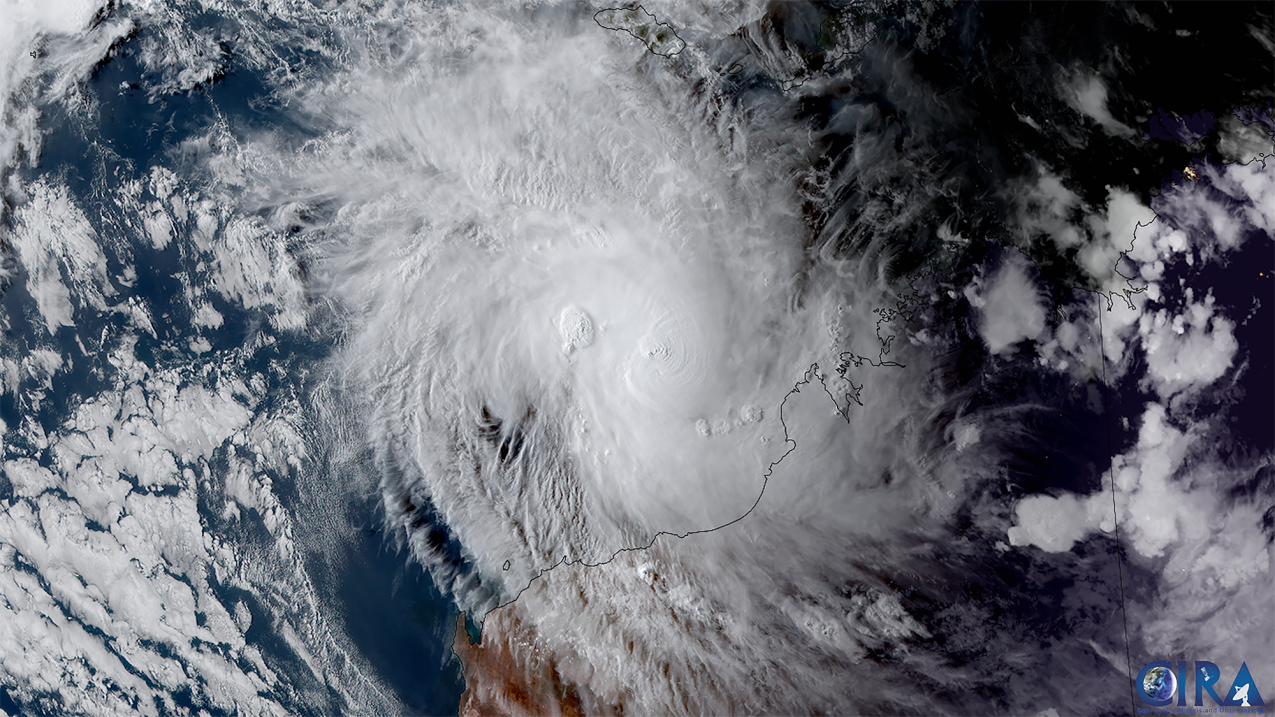Southern Hemisphere saw its warmest month on record; Global ocean temperature reached a record high for April

In this image captured on April 12, 2023, by the Himawari-9 satellite, operated by NOAA’s partners at the Japan Meteorological Agency, Tropical Cyclone Ilsa strengthens as it approaches Australia. Ilsa’s landfall set a new record for the strongest winds observed in western Australia. (Image credit: Cooperative Institute for Research in the Atmosphere at Colorado State, the Japan Meteorological Agency, and the Japan Aerospace Exploration Agency (CIRA/CSU & JMA/JAXA))
Last month added to the planet’s warm year so far, as April 2023 ranked as the world’s fourth-warmest April on record.
Earth’s global ocean temperatures were record high for the month, and the second-warmest for any month on record, according to scientists from NOAA’s National Centers for Environmental Information.
Climate by the numbers
April 2023
The average global temperature in April was 1.80 degrees F (1.00 degree C) above the 20th-century average of 56.7 degrees F (13.7 degrees C), ranking as the fourth-warmest April in NOAA's 174-year climate record. April 2023 marked the 49th-consecutive April and the 530th-consecutive month with temperatures above the 20th-century average.
The Southern Hemisphere had its warmest April and warmest month on record. The April 2023 temperature surpassed that of the previous record-warm month — March 2016 — by 0.10 of a degree F (0.06 of a degree C). Meanwhile, the Northern Hemisphere had its ninth-warmest April on record.
Looking at continents, Africa had its fourth-warmest April on record, while South America tied 2007 for its ninth-warmest April. North America, Europe and Oceania had an above-average April temperature, but didn’t rank among the top-20 warmest Aprils on record.
Global ocean temperatures set a record high for April at 1.55 degrees F (0.86 of a degree C) above the long-term average. This marked the second-highest monthly ocean temperature for any month on record, just 0.02 of a degree F (0.01 of a degree C) shy of the record-warm ocean temperatures set in January 2016.
Year to date
The global temperature for the year to date (YTD, January through April 2023) ranked as the fourth-warmest such period on record at 1.85 degrees F (1.03 degrees C) above the 1901-2000 average of 12.6 degrees C (54.8 degrees F).
According to NCEI’s Global Annual Temperature Rankings Outlook, there is a virtually certain chance (greater than 99.0%) that 2023 will rank among the 10-warmest years on record, and a ~93% chance it will rank among the top five.

Other notable climate events in the report
- Earth saw another month of low sea ice coverage: Globally, April 2023 saw the third-smallest April sea ice extent (coverage) on record. Arctic sea ice extent in April was approximately 130,000 square miles below the 1991–2020 average, which tied with April 2004 as the 11th-smallest April extent in the 45-year record. Meanwhile, the April 2023 Antarctic sea ice extent ranked third lowest on record, approximately 560,000 square miles below average.
- A below-average April for the tropics: Three named storms occurred in April across the globe, statistics that are below the 1991–2020 average for the month. Two of those storms, Herman and Ilsa, occurred in the Australian region and reached major tropical cyclone strength (winds of 111 mph or higher). Cyclone Ilsa’s landfall set a new record for the strongest winds observed in western Australia. The third was Tropical Storm Sanvu in the West Pacific — the first named storm of 2023 for the Northern Hemisphere.
More > Read NOAA’s global April climate report and download the images.



